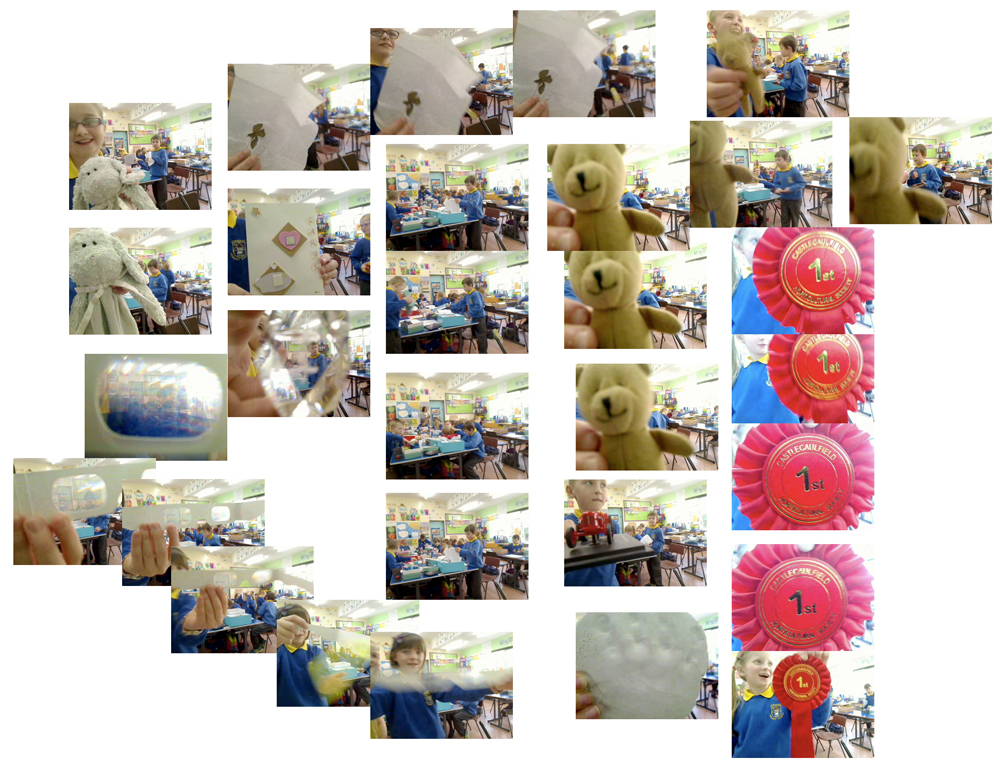After all of last week’s experimentation, this session was about photographing objects from the memory boxes again. The children started by taking time to look at each object and remember what it meant to them. We discussed the value of the object compared to the value of the photograph of the object. One of the children suggested that the photograph would be more important if you lost the object but still had a picture. Otherwise, most people felt that the object itself was more valuable than the photograph. Another person said that you could give the photograph to someone to help them remember. I want to come back to both of these ideas at a later stage.
Meanwhile, everyone was excited to delve into the boxes once more and the objects caused plenty of interest among the group. Each person selected an object from their own memory box that they wanted to photograph that day. I showed the children a set of thumbnails photos that I had taken of an alligator (stuffed, not alive) from the Craigavon Museum Services Collection. As part of a recent artist’s residency I was lucky enough to be allowed access to precious objects from the Waterside House collection on Oxford Island. I was struck by the visual similarities between the children’s memory boxes and the storage boxes used to protect smaller objects in the museum collection. We spent time talking about the alligator. What could they tell about it? It was big, it had teeth. They thought that the photos with the blue background worked because it reminded them of water and alligators live in water. They noticed that there was different lighting in different photos. We talked about close-ups and not using the whole object within the frame.
Then the children photographed their objects, this time taking lots of photos -close-ups, full frame, different composition within the frame, different lighting. They were really concentrated and the time flew by very quickly. One thing that came up was what the children should call the objects -how to label them? Some of them were difficult to describe. I was interested in that as the name can make an object more or less important/ significant. I think that after a lot of technical work the photos are becoming much more confident and experimental and some of the results are stunning. Some of the small groups decided to worked outside in order to change the lighting. They explained that they were using a gravel background and even brought in a sample to show me the colour.
The children said that they enjoyed the work in the session because they were working with their own objects. The next thing is to apply some of these skills of focussing and composing and lighting to precious objects at home. With a lot of organising on Mrs Wilson’s part the children will be allowed to take cameras home and photograph the objects that they worked on previously. I will see the results after mid-term.

